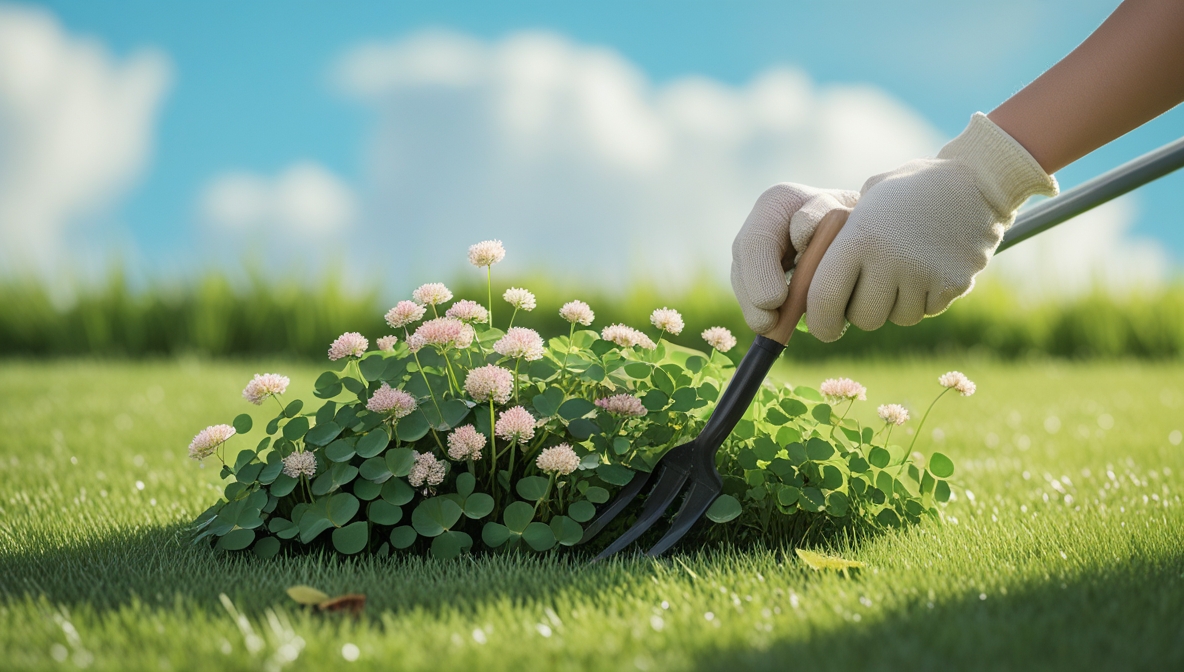Tired of patchy, speckled lawns overrun by pesky clover? You’re not alone! Clover, with its charming little four-leafed friends, can quickly take over a perfectly manicured lawn. But fear not, lawn enthusiasts! This guide will arm you with the knowledge and strategies to banish clover and reclaim your lush, green turf. We’ll explore identification, DIY solutions, and long-term prevention to ensure your lawn stays clover-free for years to come.
Contents
Clover: The Lawn Intruder
Clover, a common weed in lawns, is surprisingly persistent. Its tiny, clover-shaped leaves and often vibrant pink or white flowers are visually appealing, but they can quickly out-compete your grass, leading to a less-than-desirable lawn. This unwelcome guest thrives in compacted soil and areas with low nutrients and inconsistent watering. Its ability to quickly spread via seed and runners makes it a real challenge to eradicate.
Understanding clover’s life cycle and growth habits is key to crafting a successful eradication plan. Clover often invades lawns that are not getting enough sunlight or are stressed from other factors. It’s a hardy weed that can tolerate a wide range of conditions, making it a stubborn foe.
Identifying Clover’s Foe
Before you unleash the clover-killing arsenal, it’s crucial to correctly identify your enemy. While clover is easily recognizable by its three-leaf structure, some other weeds can look similar. Make sure you’re targeting the right culprit. A quick online search or visit to a gardening center can help you confirm your suspicions.
Knowing what’s causing the clover problem is just as important as identifying the clover itself. If it’s a nutrient deficiency, addressing that will help prevent clover growth in the future, rather than just treating the symptoms. Poor soil aeration or compaction can also be contributing factors. Pinpointing the root cause will lead to more sustainable solutions.
DIY Clover-Killing Strategies
Several DIY methods can tackle your clover infestation. A simple solution involves spot-treating the clover patches with a pre-emergent herbicide. This proactive approach prevents clover seeds from germinating in the first place. Always follow the product instructions carefully and wear protective gear.
For established clover, you might need a post-emergent herbicide. These products target existing clover plants. Be sure to choose a product specifically formulated for lawns to minimize damage to your desirable grass. Combining these methods – pre-emergent for prevention and post-emergent for targeted treatment – can maximize your success.
Long-Term Clover Prevention
Preventing clover from returning is crucial for maintaining a healthy lawn. Proper lawn care practices are essential. Ensure your lawn receives adequate sunlight and water. Maintain appropriate soil pH and fertility to help your grass thrive and outcompete the clover. Aerating your soil can also improve drainage and root development, making your lawn less hospitable to weeds.
Regular mowing, at the right height, helps keep clover in check. Remove any dead grass or debris, as they can create an environment suitable for new weeds. By focusing on the overall health of your lawn, you can create an environment that discourages clover and supports the growth of your desired grass.
Banishing clover from your lawn is a journey, not a sprint. By understanding clover’s nature, employing effective strategies, and focusing on preventative measures, you can reclaim a lush, green, and clover-free lawn. Remember, consistent effort and a healthy lawn environment are key to long-term success.






